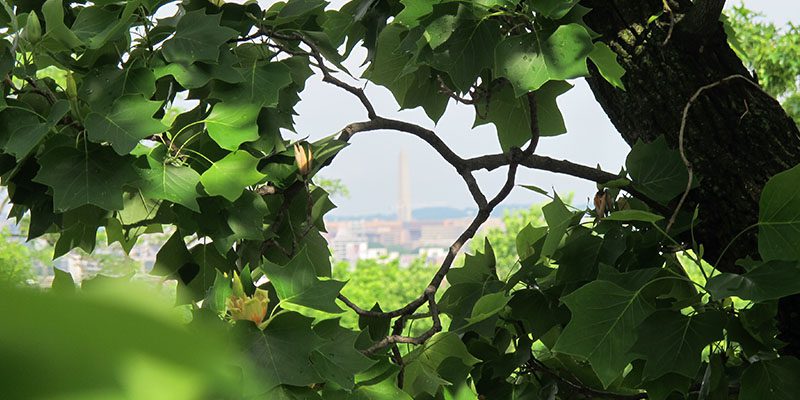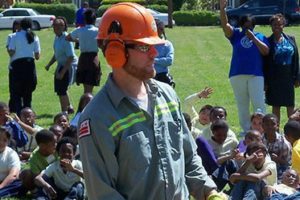
Here at Casey Trees we love maps! We have created quite a few in-house as well as in collaboration with the District’s Urban Forestry Administration (UFA).
Most maps serve a specific purpose like identifying trees planted by Casey Trees. However — what if there was a map that not only identified a tree but showed that tree’s history, discussed the species, how to identify and other scientific and historical facts? Well that’s exactly what John O’Neill — lead author of this Map Story is trying to achieve!

We chatted with John, an Urban Forester at the UFA about this project. Check out what John had to say!
Casey Trees (CT): This is a big undertaking! Can you give us some background on your project?
John O’Neill (JO): The District of Columbia has one of the most diverse urban tree canopies in the nation and this Story Map is meant to highlight that. There are currently 55 entries pairing specimen pictures with write-ups that explore the historical, literary, scientific or etymological origins of a specific tree.
Almost every entry is paired with a map showing where each specimen of that tree is planted on city streets. So if someone is interested in getting a first-hand look at, say, a golden-chain tree, all he or she has to do is check the map and see where the closest one is.
The maps grab the data in real time, so as soon as a new tree is planted, or an old one is removed, the map reflects that.
CT: What was the inspiration behind it?
JO: First, I wanted to create a repository of images and information that my fellow arborists and I could turn to. Not all of the arborists at UFA are familiar with every type of tree in our inventory; some were formally trained on the West Coast and some, like me, did not have any formal training in forestry.
And second, I wanted to make something that would interest the public beyond simple tree identification. Many websites exist that can assist individuals with tree ID. What this story map does is show how trees have culturally evolved with people and also how those trees are currently playing specific roles in their community.
CT: What are you currently doing with the project?
JO: I’m always working on expanding the story map. There are currently 55 entries, but the District of Columbia easily has twice that number of species on its streets.
This means I need to develop more content for the story map: photos and write-ups. For some trees, I already have a full write-up and I’m just waiting on that perfect picture so I might spend my winter planning on when to ambush some trees to catch them looking their best.
As far as the write-ups go, developing content means creating an interesting angle or hook for a particular tree; some trees are naturally interesting while others would be quite boring at parties.
CT: What brought you to discuss this with Casey Trees?
JO: Casey Trees has such a broad reach. By sharing this story map with Casey, I can be confident that it will reach the people it was created for: people who love trees and love the city of Washington, D.C.
CT: What are you long term hopes for this?
JO: I hope to increase the interactivity of the story map. That means expanding it to other platforms so that people can reach the content in a more accessible way. It also means developing other apps that might employ some of the same content I’ve developed for the story map but in a way that lets people tell their own stories or interact with us to help grow and preserve the city’s canopy.
CT: If you could offer advice to aspiring arborist what would you say?
JO: This is the career choice of champions. But being an arborist isn’t just hugging trees and taking pretty pictures. Getting ahead means learning the suite of technological tools that are available and figuring out how to leverage their analytical power to protect the tree canopy from pests, vandalism and other vagaries of city life.
At UFA we are very technology-driven, which makes working for us as self-actualizing as working for Google . . . but with trees.
Check out all the UFA’s Maps here and keep checking out John’s Map as more trees will be added on a rolling basis!

